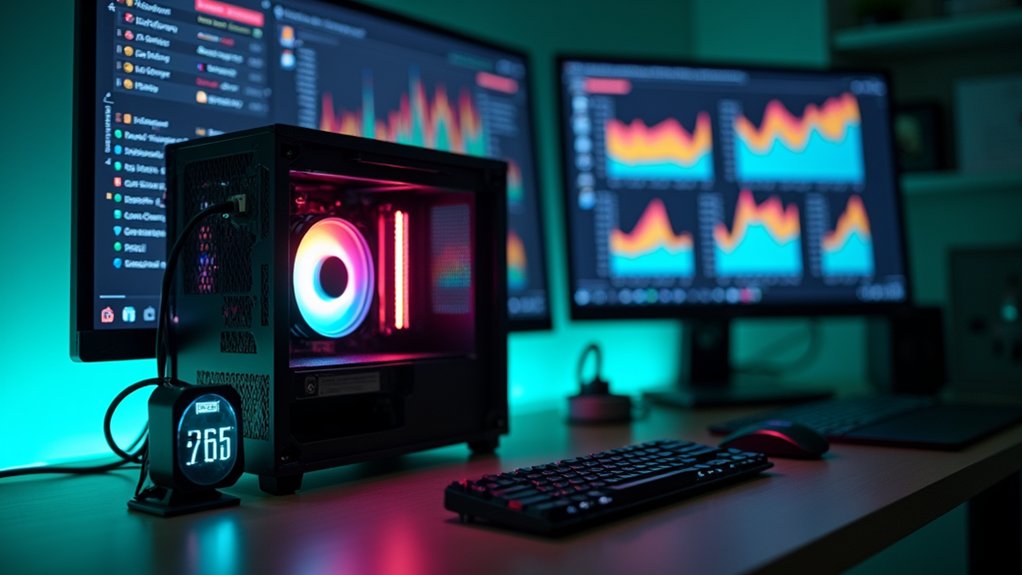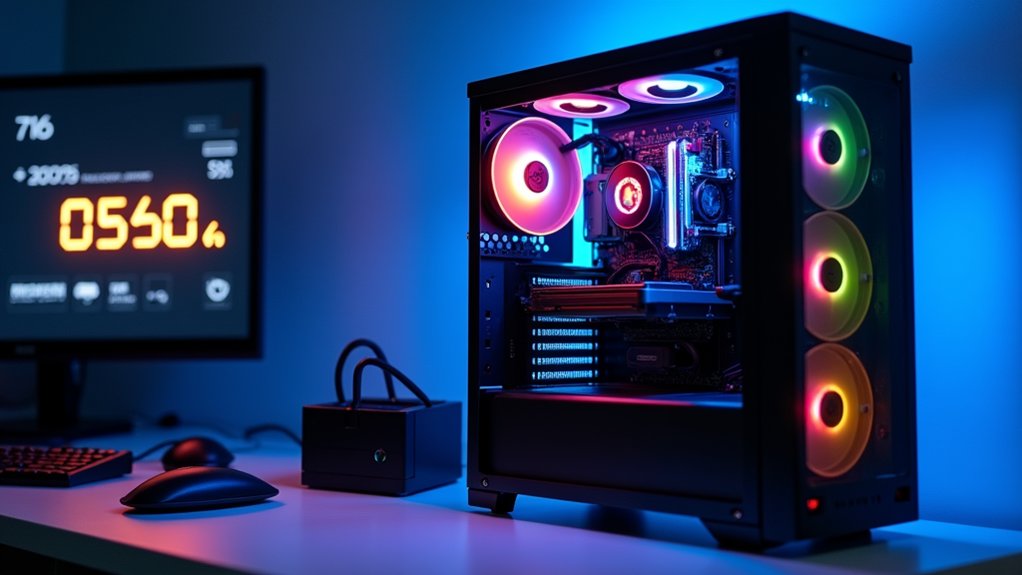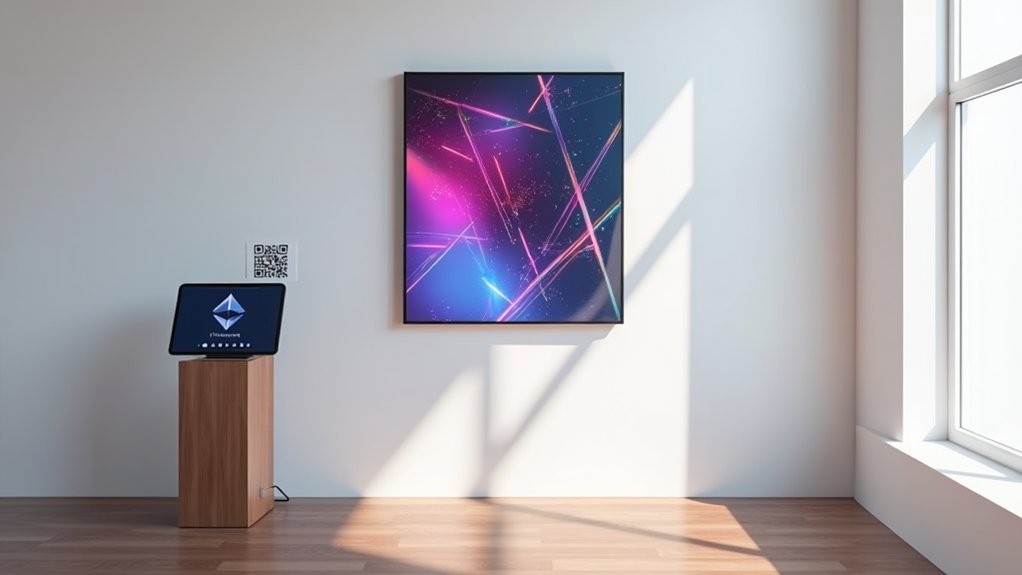Monero (XMR) ranks among the easiest cryptocurrencies to mine, utilizing the RandomX algorithm specifically designed for general-purpose CPUs. With consistent block rewards of 0.6 XMR, it maintains accessibility for individual miners without requiring specialized equipment. GPU-mineable alternatives like Ergo (ERG) offer additional entry points through ASIC-resistant algorithms that prevent industrial concentration. Economic viability depends on electricity costs, hardware efficiency, and current network difficulty, while joining mining pools can provide more predictable income streams. The following sections explore profitability factors in greater detail.

Mining, the computational process through which new cryptocurrency tokens are created and transactions are verified, remains a viable entry point for investors seeking to acquire digital assets without direct buying. Despite the competitive landscape of cryptocurrency mining, certain coins remain accessible for individual miners with modest hardware setups, offering potential returns that may offset electricity costs and initial investments.
The accessibility of mining specific cryptocurrencies hinges primarily on their consensus algorithms, with those designed to resist specialized mining equipment (ASICs) generally providing more equitable opportunities for newcomers with standard computing hardware.
Monero (XMR) stands among the most approachable options for novice miners due to its RandomX algorithm, which deliberately resists ASIC efficiency and favors general-purpose CPUs found in everyday computers. With a consistent reward of 0.6 XMR per block, it provides predictable returns for dedicated miners. This design choice reflects Monero's philosophical commitment to decentralization, ensuring that mining remains distributed across numerous participants rather than concentrated among industrial operations.
The cryptocurrency's privacy-focused architecture further distinguishes it within the market, potentially providing additional value appreciation beyond mere mining rewards.
For miners seeking alternatives to CPU-focused coins, several GPU-mineable cryptocurrencies present viable options with reasonable entry barriers. These coins typically employ algorithms like Ethash, Equihash, or variations designed to function effectively on consumer-grade graphics cards rather than specialized hardware. Ergo (ERG) is particularly appealing with its ASIC-resistant Autolykos algorithm that keeps mining more accessible to individual participants.
The economic viability of mining these currencies fluctuates with market conditions, electricity costs, and hardware efficiency ratios, necessitating careful analysis before commitment.
When selecting a cryptocurrency to mine, prospective participants must evaluate multiple factors beyond mere technical accessibility, including network hash rates, block rewards, and tokenomics. Lower network difficulty translates to higher probabilities of successful block validation for individual miners, while favorable token price trajectories may compensate for initially modest returns.
Additionally, joining mining pools—cooperative arrangements where participants combine computational resources and share rewards proportionally—often provides more consistent, predictable income streams compared to solo mining efforts, particularly for those operating with limited hardware resources. Success in cryptocurrency mining requires substantial investment in mining infrastructure including specialized hardware, appropriate software, and a secure cryptocurrency wallet to store your earnings.
Frequently Asked Questions
What Equipment Do I Need to Start Mining Cryptocurrency?
To begin cryptocurrency mining operations, one requires several essential components, including a compatible mining device (ASIC miners for Bitcoin or GPUs for altcoins), specialized mining software to connect to blockchain networks, a cryptocurrency wallet for storing earned tokens, a stable high-speed internet connection, and an adequate power supply unit.
Equipment costs vary considerably, with ASIC miners ranging from $4,600 to $11,000+, necessitating careful consideration of electricity expenses, which greatly impact long-term profitability calculations.
How Much Electricity Does Crypto Mining Typically Consume?
Cryptocurrency mining consumes substantial electricity, with global operations utilizing approximately 165 TWh annually, comparable to the Netherlands' total consumption.
Bitcoin, the most energy-intensive cryptocurrency, requires 851.77 kWh per transaction and 331,320 kWh per coin mined, whereas Ethereum, following its proof-of-stake conversion, now consumes merely 0.0006 kWh per transaction.
Mining operations often cluster in regions with inexpensive electricity, potentially raising local utility rates by up to 4.7% and straining grid infrastructure.
Are There Legal Restrictions on Crypto Mining in Certain Countries?
Crypto mining faces significant legal restrictions globally, with several countries implementing outright bans due to energy concerns and financial risks.
China, Algeria, Kosovo, Nepal, and Angola have established extensive prohibitions, while nations like Norway, Sweden, and Kazakhstan have imposed partial restrictions through taxation or energy-specific regulations.
Regulatory approaches vary considerably, from the United States' state-level disparities to the European Union's anti-money laundering frameworks, creating an intricate international landscape for miners steering through compliance requirements across jurisdictions.
Can I Mine Cryptocurrency on My Smartphone?
Smartphone cryptocurrency mining is technically possible but financially impractical.
While coins utilizing CPU-friendly algorithms like Monero (RandomX) or mobile-specific networks like Pi can be mined on smartphones, the severe hardware limitations produce negligible returns that rarely offset electricity costs.
Additionally, continuous mining operations greatly degrade device performance, cause overheating, and reduce battery lifespan, rendering smartphones unsuitable for profitable mining compared to dedicated ASIC hardware or GPU rigs.
How Long Does It Take to Mine One Coin?
The time required to mine a single coin varies considerably by cryptocurrency. For Bitcoin, mining one coin would take an individual miner several decades due to network difficulty, which currently requires approximately 1.6 exahash/second to mine 1 BTC daily.
More accessible cryptocurrencies with lower difficulty may be mined in shorter timeframes, though all mining durations depend on hardware specifications, network difficulty, and total hashrate distribution among participants.









